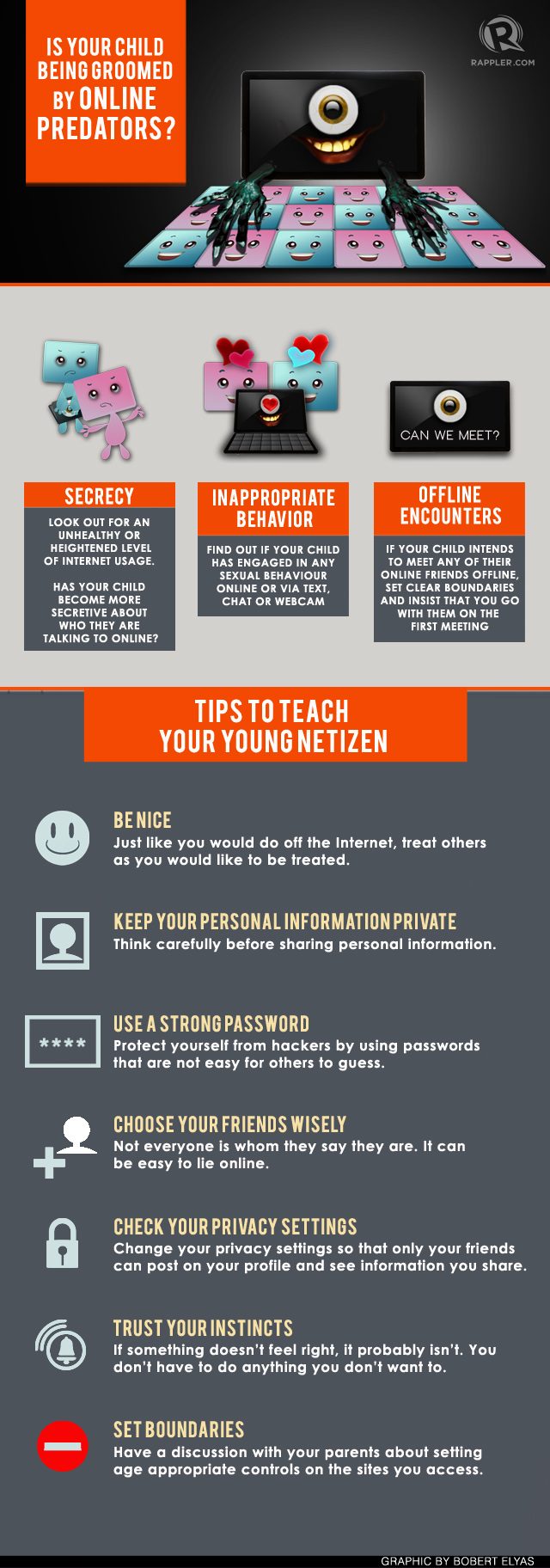SUMMARY
This is AI generated summarization, which may have errors. For context, always refer to the full article.
MANILA, Philippines – “One in 6 children experience sexual violence and hardly any of them report it.”
That was the revelation made by Tim Gerrish, who heads the delegation of the UK-based Child Exploitation and Online Protection Centre (CEOP).
The Internet has made it easier for sexual offenders to access children and find new ways of sexually exploiting them even without actually touching them.
From cyber-bullying, uploading of pictures, to child abuse in the forms of viewing and inappropriate content, children are more vulnerable to sexual abuse via the Internet.
“Not everyone you meet online is a friend, not everyone is who they say they are online, but young children don’t have that concept sometimes,” said Gerrish who added that today’s children are more comfortable with the idea of making contact with someone online first before meeting them face to face.
Gerrish and members of the CEOP team are in Manila to conduct training on protecting children online among the various partner stakeholders in education, law enforcement, and NGOs.
The Safeguarding Children Online campaign will raise awareness about the dangers that children can face online. In addition, the British embassy Manila will host a microsite on their website to provide practical information about online protection for children, as well as their parents.
Ever heard of ‘grooming’?
Among the risks children face on-line, Gerrish introduced the term, is “grooming.”
“Grooming is a process used to prepare a child for sexual abuse. The offender aims to gain the trust of the child and those around him or her who act as inhibitors, preventing the offender for getting access to the child,” he explained.
“In the local context, we call it (grooming) — nililigawan yung bata (the child is being wooed),” said Ace Diloy advocacy and training officer of the local NGO, Stairway Foundation.
Flattery and bribery are among the grooming techniques sexual offenders use to befriend a child, engage him in conversation, and gain his trust before introducing sexual topics and or pictures.
In a study about online behaviors of children in the Philippines conducted by Stairway Foundation in 2012, Diloy revealed that 49% of those in the 10-12 years old age range have seen online pornography, while 72% in the 13-17 years old age range have seen online pornography either in the form of pictures, videos or animation.
“Online has replaced traditional print media as the first place where children are exposed to images that are sexual in nature,” said Diloy. “Exposing children to sexual images is sometimes used as a grooming technique to desensitize him and break down his resistance.”
The survey also revealed that 86% of children aged 10-17 years old had a Facebook account and 5 out of 10 added strangers as online friends.
In addition, 7% of respondents said they had practiced “sexting” or sent nude photos or videos of themselves to other people, but Diloy said this may be an understated figure as many are still ashamed to admit to “sexting.”
“Kids equate the number of friends they have on Facebook as a sign of popularity and they share all sorts of information online. Without a concept of digital privacy there is a buffet table of information open to sexual offenders,” Diloy said.
Networking among sexual offenders
The capabilities of the Internet also allowed for sexual offenders to network among one another, share pictures and images, and in the case of the “traveling sex offender,” to get information about countries where laws on child sexual abuse are lax.
“Whereas a sexual offender would feel isolated and alone, with the Internet, he is able to find like-minded people,” explained Gerrish.
“It is important to remember that there is no cure for a sexual offender. His condition can only be managed. Just because a sexual offender has served his sentence, it doesn’t mean that he is no longer a risk to young children,” Gerrish added.
The Safeguarding Children Online campaign is launched alongside a new international initiative to prevent sexual offenders who have worked in the UK from travelling to other countries and gaining access to children through teaching or volunteering roles.
The Internet did not create child sexual abuse, but it did facilitate new methods of “non-contact” sexual abuse of children, Gerrish concluded.

A micro-site in the British embassy website will be central to this information drive.
For videos on age-appropriate content on sexual abuse online as well as films for teachers and parents, log onto the CEOP YouTube. – Rappler.com
Add a comment
How does this make you feel?
There are no comments yet. Add your comment to start the conversation.